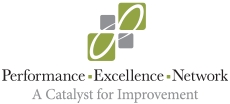What is your vision of being a “world class” company or organization? Many companies use one or a combination of the following tools with only limited success:
- A “Culture” of Quality and Continuous Improvement at all levels of the organization promoting increased customer satisfaction
- Employee Suggestion System — Process improvements, cost reductions, and innovation through suggestions and ideas
- Visual Factory — Effective communication and employee involvement through visual communication boards
- “Sense of Urgency” to resolve issues by using a Quick Response Quality Control (QRQC) approach
- Problem Solving Culture using structured 8-D methodology
- Behavioral Based — Reward and Recognition system to encourage Ideal Employee Behaviors
- “Preventive” instead of “Reactive” Quality Department focus
- Systematic training and development of all employees
- Teamwork is required and encouraged at all levels
- Lessons Learned — sharing of best practice ideas with other departments, sites, etc.
- “Engaged Teams” for increased ownership of manufacturing using employee mini audits
- Supply Chain “partnerships” and supplier development program
But the secret is this: you need all of those tools to achieve world class performance! So how do organizations successfully achieve world class status?
The Performance Excellence Network is pleased to host a special discussion featuring Jim Gertsen, director of quality at New Ulm-based Windings, at our February 18 Mankato area PEN breakfast entitled “Operational Excellence: Emerging Lessons from Windings.”
Jim will discuss how to develop an implementation plan, a detailed manual with continuous improvement tools, a method to audit & monitor the implementation success, and — most importantly — how to incorporate management involvement and support in creating an operational excellence effort.
The discussion will be hosted by South Central College in North Mankato. Continental breakfast will be served from 7:30 to 8:00 with the discussion from 8:00 to 9:00 am. No cost for PEN members; $30 for non-member guests.
Biography
Jim Gertsen is the Director of Quality of Windings, a 50+ year old manufacturer of electromagnetic solutions for critical applications in Aerospace, Defense, Automotive, Medical, Oil & Gas and general Factory Automation based in New Ulm. As Quality function leader, Jim is instrumental in overseeing compliance with Windings’ Quality Management System and ensuring that employee commitment to a high standard of quality is met or exceeded at all times.
Jim comes to Windings with over 35 years of experience in quality, primarily in major Automotive, Aerospace, and commercial manufacturing companies. For the last 25 years, he’s held responsibility for the implementation of ISO-9000, AS-9100, TS-16949 along with other certification standards.
In 2010, Jim began implementation of the Shingo Prize Model for Operational Excellence program and led the implementation of many continuous improvement projects for his current employer. The Shingo Prize is a positive, behavioral-based approach designed to encourage employee involvement and participation in the implementation of process improvement techniques.
With Jim’s arrival, Windings launched a “World Class Manufacturing” approach known as Operational Excellence. “Operational Excellence is a quality culture-based program where problem solving, lean, teamwork and leadership behaviors result in the ongoing improvements to our organization.” Jim states.
The new process focuses on the customers’ needs and identifies ideal employee behaviors that are positive, empowered, and support a culture of continuous improvement. Jim said, “We have developed an implementation plan which includes a plan, roadmap, manual, and assessment system to achieve a sustainable world class organization.” Many of the techniques are based on the Shingo prize philosophy in which Jim has experience.
“We believe that the most successful companies are the ones who take a well-planned and organized approach to the implementation of continuous improvement methodologies and tools with equal focus on process, culture, and results.” Jim states.




